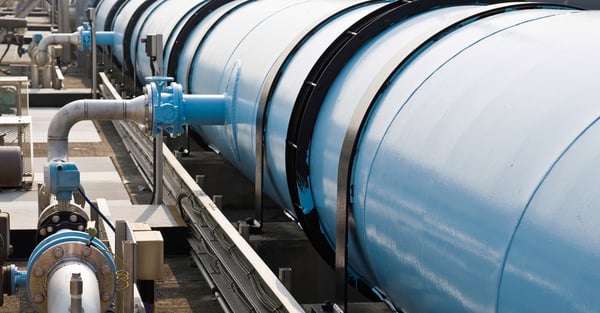Differential Pressure: The Difference Between Two Pressures
In the world of pressure technology, a commonly misunderstood and overlooked component of industrial process systems are differential pressure gauges. Differential pressure is a broad category of pressure readings in which many types of pressure could be classified, including absolute and gauge pressure. So, what makes differential pressure different and what is the value in calculating differential pressure?
Firstly, differential pressure (DP or ∆P) is the difference between any two applied pressures. Almost all pressure readings are considered differential pressure readings, as pressure is measured as absolute pressure, in relation to vacuum, or gauge pressure, in relation to atmospheric pressure.
The difference between vacuum, gauge and differential pressure however is the reference pressure value. Absolute pressure has a fixed reference of 0 psi, full vacuum. Bi-directional pressure, or gauge pressure, has a fixed reference of atmospheric pressure, a set value that fluctuates based on atmospheric conditions.
The Importance of Calculating Differential Pressure
Differential pressure, in general, is a measure of pressure where the reading and reference values are variable. Differential pressure is calculated by subtracting one of these values from the other. If Pipe A flows at 100 psi and Pipe B flows at 30 psi, the differential pressure would be 70 psi.
How can a concept so simple be so vital to industrial process systems? One application of differential pressure is to monitor flow and filtration in industrial systems. Differential pressure is used to determine if a pipeline has any clogs or contaminates as particles flow through orifices and filters. If part of the pipe gets clogged, it will cause a change in the pressure, which causes differential pressure to increase or decrease. At a certain level, an operator would need to perform maintenance on the pipeline to get it flowing efficiently again. By monitoring differential pressure between pipes, an operator can ensure their product is clean and safe while being cost and resource efficient.

A more widely appreciated application of differential pressure involves the pressurization of airplane cabins. Most modern day people have ridden in an airplane sometime in their life. You take off and almost immediately your ears start to pop due to the change in pressure as you ascend into the sky. This is a mild symptom of the extreme pressure change the plane is experiencing. By gauging the pressure outside and controlling the cabin pressure accordingly, humans are able to travel comfortably at 35,000 feet without needing an oxygen mask or experiencing any negative health effects.
Our Differential Pressure Measurement Solutions
WIKA offers three types of differential pressure gauges - piston-style, dual diaphragm and all-welded/all stainless steel differential gauges - for different pressure and temperature applications.
If reliable results are what you need, Mensor provides an ideal solution to simplify and enhance the accuracy of your differential pressure measurements. The ground-breaking CPT8900 High Accuracy Differential Pressure Transducer is the latest in sensor innovation. Using an automatic correction method, the CPT8900 accounts for static line pressure effects, delivering differential accuracies of 0.03% FS or better.
Thanks to the CPT8900, high accuracy has a new definition! To learn more about how you can streamline your differential pressure measurement process, get in touch with Mensor for more information.
Related Reading:


